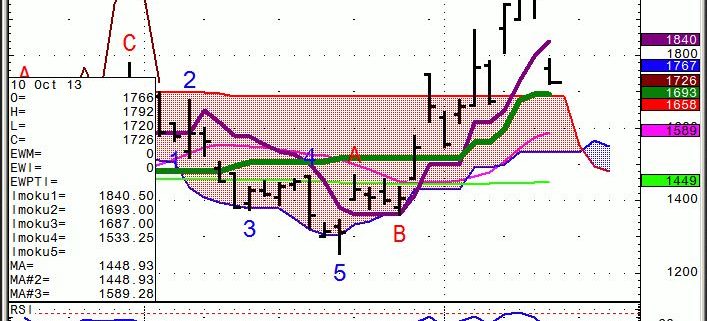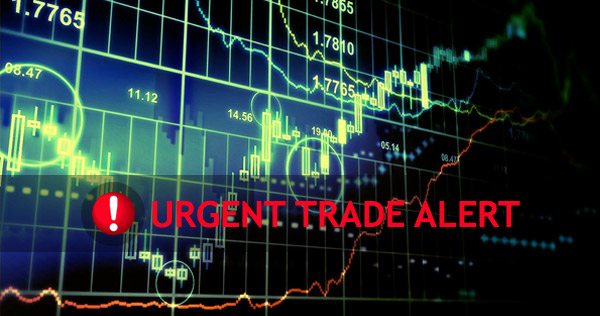While the Diary of a Mad Hedge Fund Trader focuses on investment over a one week to six-month time frame, Mad Day Trader, provided by Jim Parker, will exploit money-making opportunities over a brief ten minute to three day window. It is ideally suited for day traders, but can also be used by long-term investors to improve market timing for entry and exit points.
While the Diary of a Mad Hedge Fund Trader focuses on investment over a one week to six-month time frame, Mad Day Trader, provided by Jim Parker, will exploit money-making opportunities over a brief ten minute to three day window. It is ideally suited for day traders, but can also be used by long-term investors to improve market timing for entry and exit points.
Global Market Comments
October 10, 2013
Fiat Lux
Featured Trade:
(THE BEST ETF?S OF 2013),
Guggenheim Solar ETF (TAN)
Market Vectors Solar Energy ETF (KWT)
First Trust NASDAQ Clean Edge Green Energy Index Fund (QCLN)
Market Vectors Global Alternative Energy ETF (GEX)
The PowerShares Wilderhill Clean Energy Portfolio (PBW)
The First Trust ISE Global Wind Energy Index Fund (FAN)
The Market Vectors Biotech ETF (BBH)
The Global X Social Media Index ETF (SOCL)
The PowerShares Dynamic Biotechnology & Genome Portfolio (PBE)
The PowerShares Gold Dragon China Portfolio (PGJ)
(A NOTE ON THE TESLA FIRE), (TSLA)
Tesla Motors, Inc. (TSLA)
I?m sure you all spent the better part of last January explaining to your clients that they should be pouring all of their money into alternative energy, social media, and biotech ETF?s. What! You didn?t? You obviously failed to get the memo. Well, neither did I.
Yes, I know this sounds like the makeup of the Sierra Club Pension Fund, if such a thing exists. Take a look at the top performing non leveraged ETF?s in 2013 and you will see a list that is dominated by these peripheral sectors, many of which were close to bankruptcy only a year ago. Who knew? The explanations for success vary with each industry.
Alternative energy is the easy one to understand, which I have long regarded as a cheap call option on the price of oil. The rising price of Texas tea boosts the breakeven cost of alternatives, and it jumped from $86 last December to as high as $112.50 last month. This enabled many companies to move well into profitability for the first time. Costs have imploded, thanks to huge supply of solar cells coming out of China. The rocket fuel came when the administration imposed punitive duties on below cost Chinese exports.
As a result, solar energy is now cheaper than buying electric power from the local grid, especially in the Southwest, where the sun shines, with bills dropping below 8 cents per kWh. I have flown over the Southern California deserts in a small plane to inspect some of these plants and they are truly gargantuan, stretching on for square miles.
They are helped by a Golden State law requiring that 30% of all power be obtained from alternative sources by 2020. Some 30 other states have passed similar legislation, with an additional six providing voluntary guidelines. This is in addition to 67 foreign countries with such mandates.
Biotechnology is an easy sell, and is why the Health Care Sector (XLV) is one of my favorites to play in the wake of any settlement of the Washington shutdown. Obamacare is about to deliver 30 million new paying customers to the industry. Those who already have health insurance coverage are aging and getting sicker at an unprecedented rate. The obesity epidemic helps, the result of our national addiction to cheeseburgers.
The rate of technological development is accelerating far beyond anyone?s imagination, throwing off ever more big ticket, highly profitable products. Much of this is going on in the San Francisco Bay area within sight of my office. Some of these cures cost $100,000 a year, for life. And guess what? Consumers in increasingly wealthy emerging nations like to stay healthy as well.
The social media boom is the riskiest, and most speculative, of this list of great performers. You would think investors would be wary in the wake of the Facebook (FB) IPO debacle. In fact, CEO Mark Zuckerberg, engineered one of the greatest investors relations turnarounds in history, and the shares finally responded, more than doubling. It turns out that the company really does make money after all, lots of it.
Keep in mind that this year?s homeruns often become next year?s strikeouts, so I wouldn?t be chasing these up here.
TOP 10 ETF?S OF 2013
Guggenheim Solar ETF (TAN) +130.8%
Market Vectors Solar Energy ETF (KWT) +93.4%
First Trust NASDAQ Clean Edge Green Energy Index Fund (QCLN) +82.4%
Market Vectors Global Alternative Energy ETF (GEX) +66.8%
The PowerShares Wilderhill Clean Energy Portfolio (PBW) +62.5%
The First Trust ISE Global Wind Energy Index Fund (FAN) +55.7%
The Market Vectors Biotech ETF (BBH) +55.7%
The Global X Social Media Index ETF (SOCL) +57.3%
The PowerShares Dynamic Biotechnology & Genome Portfolio (PBE) +56.9%
The PowerShares Gold Dragon China Portfolio (PGJ) +57.2%
 So Goes the Price of Alternative Energy
So Goes the Price of Alternative Energy
You can? keep a good stock down. That?s the obvious message on Tesla (TLSA) shares in the wake of the fire that consumed one of its $80,000 Model?s S-1?s on a Washington state road after it ran over the rear bumper of the truck it was following. The video was quickly plastered all over YouTube (click here to view).
This was the first S-1 to catch fire since the production run started two years ago. That compares to the roughly 400 gasoline powered vehicles that catch fire on US roads nearly every day. If you really want to see how volatile gasoline is, try lighting a campfire with it some day. Even tossing lit matches in from a great distance, as I once did, you?ll be lucky to have your eyebrows left. I didn?t.
Tesla followed up quickly with an analysis and a letter with a complete explanation sent to all other S-1 drivers signed by none other than CEO Elon Musk. I have included the entire text below in italics.
What happened to the hapless driver of the burning S-1? He is eagerly awaiting delivery of another S-1 from the Fremont, California factory. It seems, he loves the car, and can?t wait to get back into one.
?Earlier this week, a Model?S traveling at highway speed struck a large metal object, causing significant damage to the vehicle. A curved section that fell off a semi-trailer was recovered from the roadway near where the accident occurred and, according to the road crew that was on the scene, appears to be the culprit. The geometry of the object caused a powerful lever action as it went under the car, punching upward and impaling the Model?S with a peak force on the order of 25 tons. Only a force of this magnitude would be strong enough to punch a 3 inch diameter hole through the quarter inch armor plate protecting the base of the vehicle.
The Model?S owner was nonetheless able to exit the highway as instructed by the onboard alert system, bring the car to a stop and depart the vehicle without injury. A fire caused by the impact began in the front battery module ? the battery pack has a total of 16 modules ? but was contained to the front section of the car by internal firewalls within the pack. Vents built into the battery pack directed the flames down towards the road and away from the vehicle.
When the fire department arrived, they observed standard procedure, which was to gain access to the source of the fire by puncturing holes in the top of the battery's protective metal plate and applying water. For the Model?S lithium-ion battery, it was correct to apply water (vs. dry chemical extinguisher), but not to puncture the metal firewall, as the newly created holes allowed the flames to then vent upwards into the front trunk section of the Model?S. Nonetheless, a combination of water followed by dry chemical extinguisher quickly brought the fire to an end.
It is important to note that the fire in the battery was contained to a small section near the front by the internal firewalls built into the pack structure. At no point did fire enter the passenger compartment.
Had a conventional gasoline car encountered the same object on the highway, the result could have been far worse. A typical gasoline car only has a thin metal sheet protecting the underbody, leaving it vulnerable to destruction of the fuel supply lines or fuel tank, which causes a pool of gasoline to form and often burn the entire car to the ground. In contrast, the combustion energy of our battery pack is only about 10% of the energy contained in a gasoline tank and is divided into 16 modules with firewalls in between. As a consequence, the effective combustion potential is only about 1% that of the fuel in a comparable gasoline sedan.
The nationwide driving statistics make this very clear: there are 150,000 car fires per year according to the National Fire Protection Association, and Americans drive about 3 trillion miles per year according to the Department of Transportation. That equates to 1 vehicle fire for every 20 million miles driven, compared to 1 fire in over 100 million miles for Tesla. This means you are 5 times more likely to experience a fire in a conventional gasoline car than a Tesla!
For consumers concerned about fire risk, there should be absolutely zero doubt that it is safer to power a car with a battery than a large tank of highly flammable liquid.?
?
Elon Musk
CEO,
Tesla Motors
 S-1 Driver, Eyebrows Intact
S-1 Driver, Eyebrows Intact
As a potentially profitable opportunity presents itself, John will send you an alert with specific trade information as to what should be bought, when to buy it, and at what price. This is your chance to ?look over? John Thomas? shoulder as he gives you unparalleled insight on major world financial trends BEFORE they happen. Read more
While the Diary of a Mad Hedge Fund Trader focuses on investment over a one week to six-month time frame, Mad Day Trader, provided by Jim Parker, will exploit money-making opportunities over a brief ten minute to three day window. It is ideally suited for day traders, but can also be used by long-term investors to improve market timing for entry and exit points.
While the Diary of a Mad Hedge Fund Trader focuses on investment over a one week to six-month time frame, Mad Day Trader, provided by Jim Parker, will exploit money-making opportunities over a brief ten minute to three day window. It is ideally suited for day traders, but can also be used by long-term investors to improve market timing for entry and exit points.
Legal Disclaimer
There is a very high degree of risk involved in trading. Past results are not indicative of future returns. MadHedgeFundTrader.com and all individuals affiliated with this site assume no responsibilities for your trading and investment results. The indicators, strategies, columns, articles and all other features are for educational purposes only and should not be construed as investment advice. Information for futures trading observations are obtained from sources believed to be reliable, but we do not warrant its completeness or accuracy, or warrant any results from the use of the information. Your use of the trading observations is entirely at your own risk and it is your sole responsibility to evaluate the accuracy, completeness and usefulness of the information. You must assess the risk of any trade with your broker and make your own independent decisions regarding any securities mentioned herein. Affiliates of MadHedgeFundTrader.com may have a position or effect transactions in the securities described herein (or options thereon) and/or otherwise employ trading strategies that may be consistent or inconsistent with the provided strategies.













